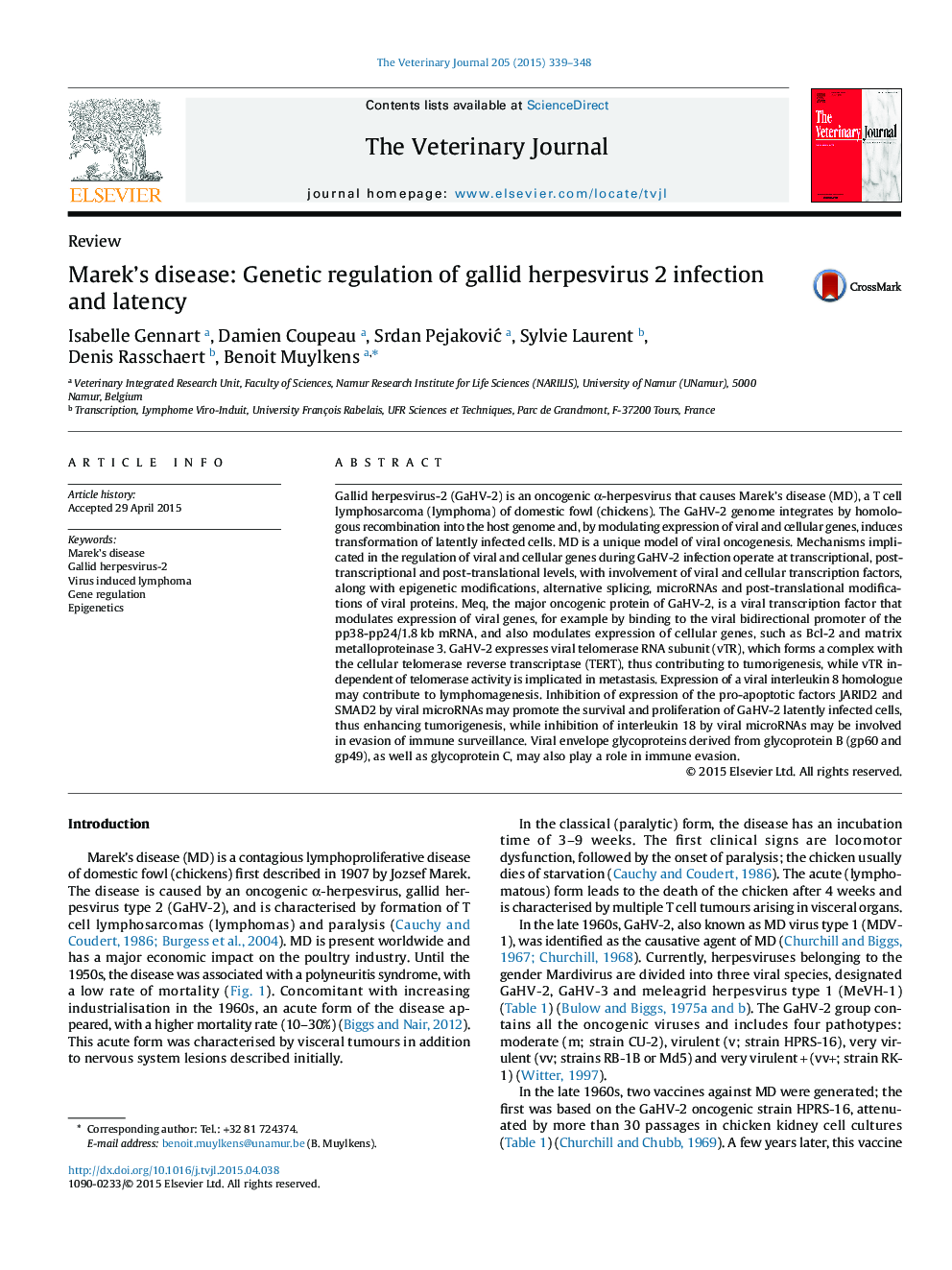| Article ID | Journal | Published Year | Pages | File Type |
|---|---|---|---|---|
| 2463873 | The Veterinary Journal | 2015 | 10 Pages |
•Gallid herpesvirus 2 (GaHV-2) induces Marek's disease, a lymphosarcoma with a major economic impact on the poultry industry.•GaHV-2 alters transcription, splicing and post-translational modifications in latency and tumorigenesis.•Further studies are needed to understand how this oncogenic herpesvirus interacts with the host cell to induce cancer.•This review updates the mechanisms involved in the regulation of viral and cellular genes during GaHV-2 infection.
Gallid herpesvirus-2 (GaHV-2) is an oncogenic α-herpesvirus that causes Marek's disease (MD), a T cell lymphosarcoma (lymphoma) of domestic fowl (chickens). The GaHV-2 genome integrates by homologous recombination into the host genome and, by modulating expression of viral and cellular genes, induces transformation of latently infected cells. MD is a unique model of viral oncogenesis. Mechanisms implicated in the regulation of viral and cellular genes during GaHV-2 infection operate at transcriptional, post-transcriptional and post-translational levels, with involvement of viral and cellular transcription factors, along with epigenetic modifications, alternative splicing, microRNAs and post-translational modifications of viral proteins. Meq, the major oncogenic protein of GaHV-2, is a viral transcription factor that modulates expression of viral genes, for example by binding to the viral bidirectional promoter of the pp38-pp24/1.8 kb mRNA, and also modulates expression of cellular genes, such as Bcl-2 and matrix metalloproteinase 3. GaHV-2 expresses viral telomerase RNA subunit (vTR), which forms a complex with the cellular telomerase reverse transcriptase (TERT), thus contributing to tumorigenesis, while vTR independent of telomerase activity is implicated in metastasis. Expression of a viral interleukin 8 homologue may contribute to lymphomagenesis. Inhibition of expression of the pro-apoptotic factors JARID2 and SMAD2 by viral microRNAs may promote the survival and proliferation of GaHV-2 latently infected cells, thus enhancing tumorigenesis, while inhibition of interleukin 18 by viral microRNAs may be involved in evasion of immune surveillance. Viral envelope glycoproteins derived from glycoprotein B (gp60 and gp49), as well as glycoprotein C, may also play a role in immune evasion.
